Croatian company Greyp (pronounced “grape”) is a “sister company” to Rimac Automobili, which you may know as an ultra-high performance electric hypercar manufacturer. Rimac makes some of the world’s most extreme cars, and has leveraged its expertise into becoming a supplier to other car companies looking to make powerful, quick electrics.
Greyp, which has been active in Europe for several years now and has just launched online sales and retail partnerships in the USA, has similar aspirations. These guys don’t just want to build outstanding ebikes; they want to push things forward with technological innovations that they can spin out and sell to other ebike manufacturers. So, as much as being bicycles, these things are technology showcases.
Thus, the Greyp 6.1 I’ve been riding this week has every bell and whistle known to man. If you don’t like jingling and tooting, this is resolutely not the bike for you. Mind you, the basic bike package – before anything starts getting all connective and artificially intelligent – is pretty incredible to begin with, so let’s start there.
The Greyp 6.1 as a bicycle
The frame is custom, a carbon composite enduro-style off-road body, and it’s designed to look as electric as possible. The opposite to any kind of stealth design, this thing screams its electric credentials with a lurid, yellow, 700 watt-hour battery module slung up the middle of the frame rather than being integrated into any downtubes or hidden away at all.
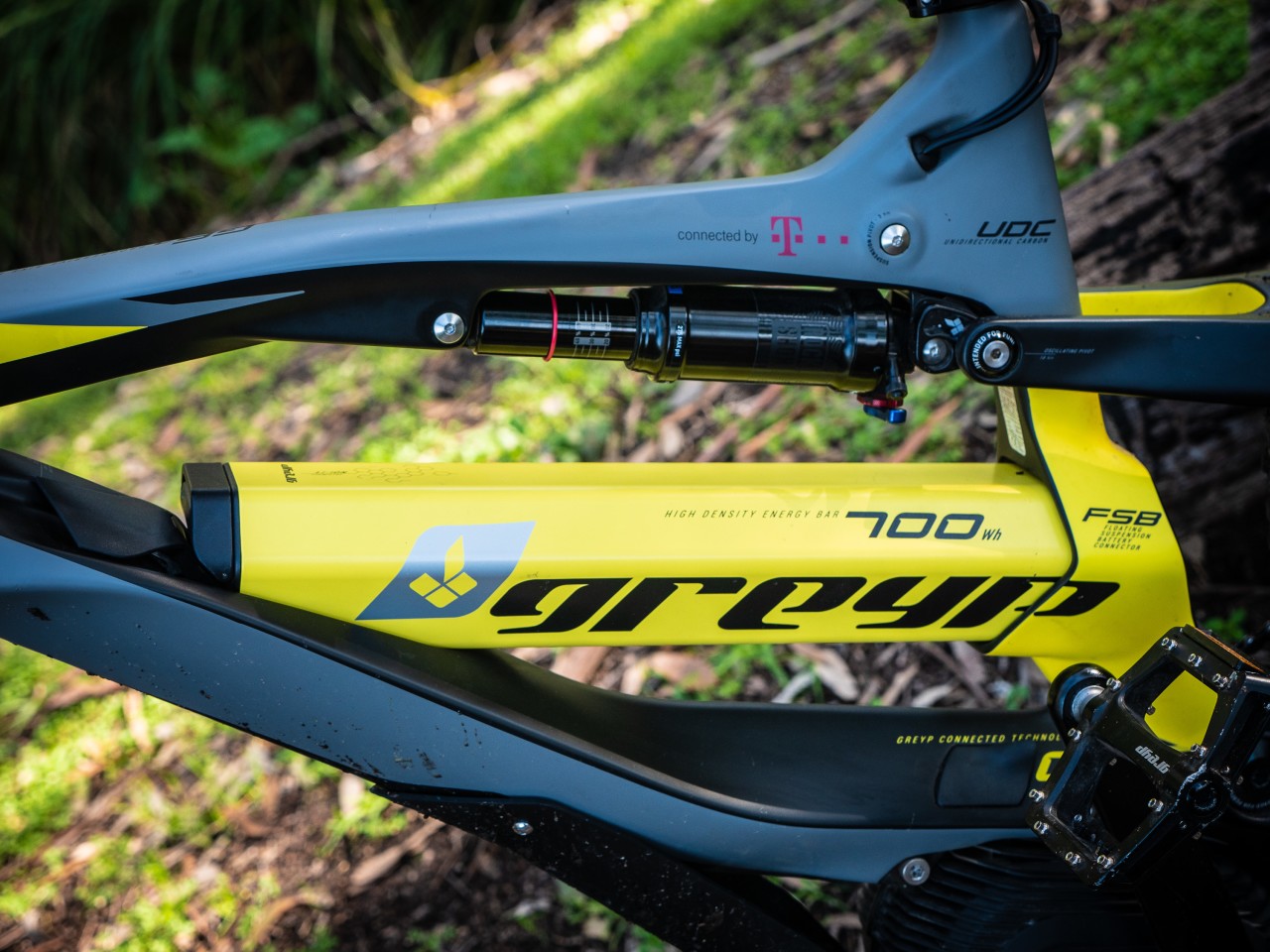
Loz Blain/New Atlas
It’s a dual-suspension frame, with meaty RockShox air suspension at both ends. Power is supplied by a third-party mid-drive motor from Taiwan’s MPF, either a 460-watt version, or in the case of this Euro/Australian street-legal version, a 250-watt unit. But it’s one of the gruntiest 250s I’ve slung a leg over, making some 90 Nm (66 lb.ft) of torque. That’s well ahead of the top-of the line Bosch Performance Line CX at 75 Nm (55 lb.ft), which itself is a terrific motor.
Power transmission is handled via SRAM’s excellent ebike-specific EX1 components, including an 8-speed trigger shift and a monster rear cassette built from case-hardened tool steel. Brakes are Formula Cura disc units, wheels are 27.5-inch Blackjacks, and the tires are Schwalbe Nobby Nics, nearly as big, fat and knobby as the front hoop on a dirtbike.
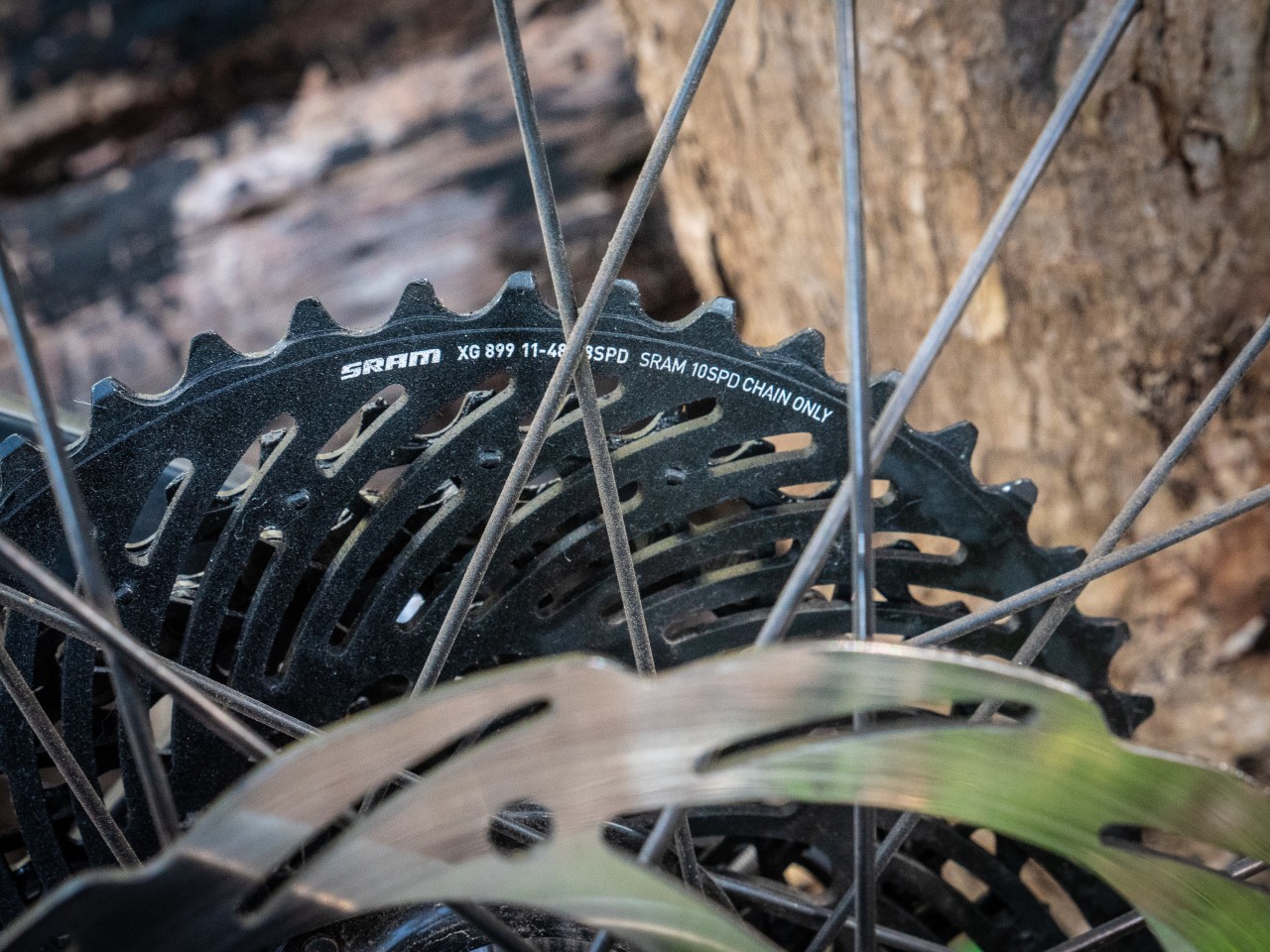
Loz Blain/New Atlas
There’s a dropper seat post that lets you push the seat down and out of the way if you’re doing a bunch of technical standy-uppy business, and then pops it back up to full height at the touch of a lever. It’s only got 100 mm (3.9 in) of travel, though, due to the frame design, so it’s not as far out of the way as others.
Riding the thing
It’s a big and intimidating thing to look at, bristling with off-road capabilities far beyond my own and highly conspicuous wherever it goes. But once I’m up on that high seat and going for it, it’s comfortable and quick on the road, despite wide bars clearly designed for off-roading.
Greyp spent more than a year working with the Taiwanese motor supplier to design a custom power curve, and the effort has paid off with a butter-smooth torque delivery that reads and reacts to how hard and fast you’re pedaling and amplifies your efforts without the kind of conspicuous jerking you can find on some high-power models. Built with all-metal gears inside, it’s quiet and strong.
The shifting is exemplary, even though the jumps between ratios on the 8-speed cassette can be wide. At times it shifts so perfectly there’s barely an interruption in acceleration. The SRAM gear feels industrial-grade and up to the challenge of handling a powerful mid-drive motor, and that’s certainly not something you can say for others.
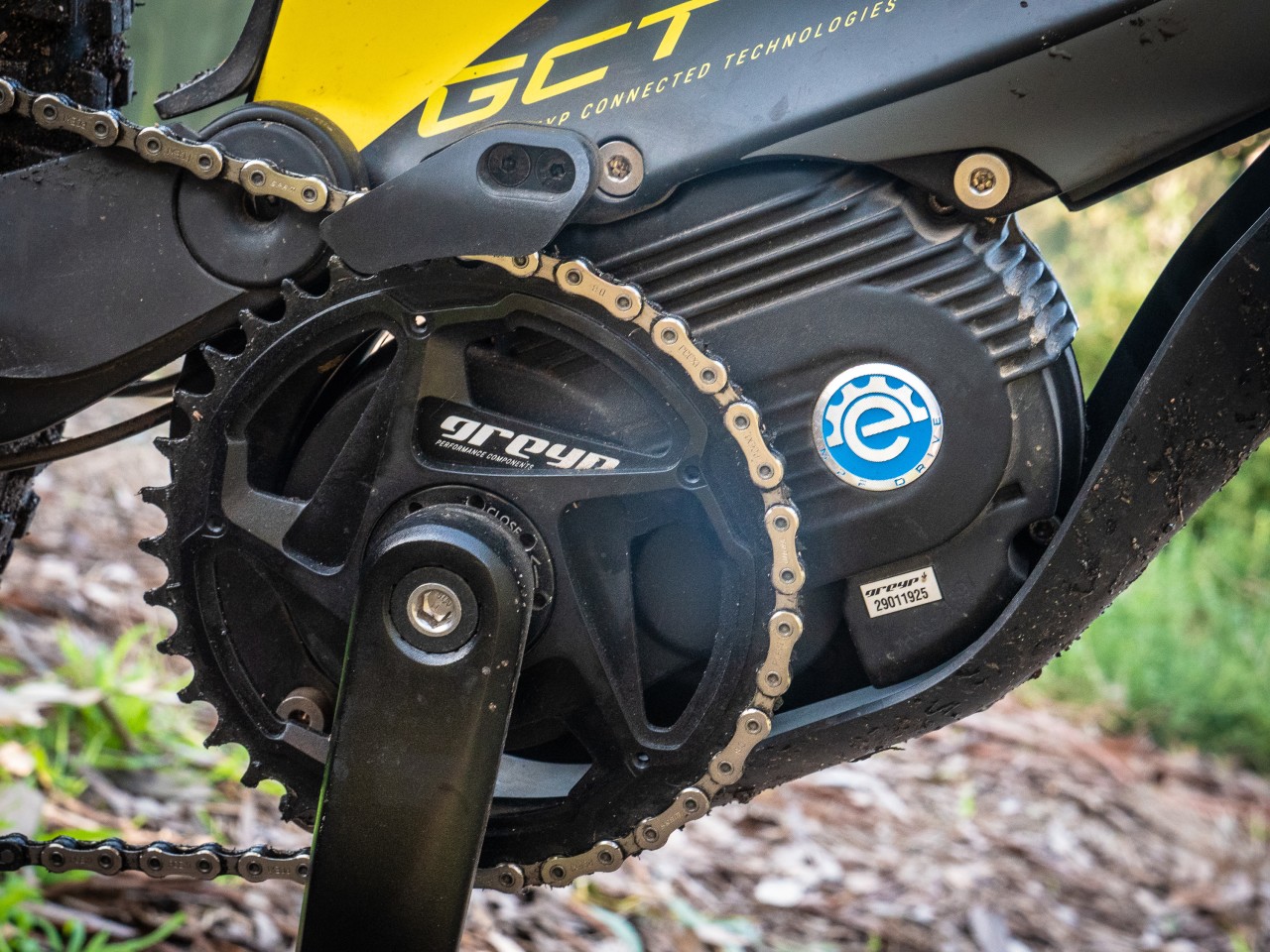
Loz Blain/New Atlas
The big, fat tires are noisy at speed and definitely add rolling resistance, but in conjunction with the Rockshox suspension they make for a pretty cushy ride, not to mention a feeling of complete invulnerability to obstacles.
Curbs? Not a problem. Jumps? Bring it on. Roots, rocks, small fallen trees, mud, sand and loose gravel are child’s play with this setup, and I find myself zig-zagging around looking for more fun stuff to throw it at. It makes light work of a couple of short slopes I’d never have tried on my own, more road-oriented ebike, and all in all I’m hugely impressed by its off-road and soft-road capabilities.
At the highest of five assistance levels, this is a quick and exhilarating bike – right up until the pathetic, government-mandated 25 km/h (15.5 mph) soft limiter kicks in. Beyond this speed, you really feel the size of the bike and the drag of the tires. The motor doesn’t seem to love it either, making a kind of squelching noise as you push on, and I wonder if that adds drag. Mind you, this is built to be an off-roader, and 25 km/h can feel plenty quick on a trail. And pretty much any ebike can be derestricted.
All in all, I’m left highly impressed by its capabilities as a bike alone, it’s certainly a very capable platform to build on and feels like it’s ready to handle all kinds of abuse out in the woods.
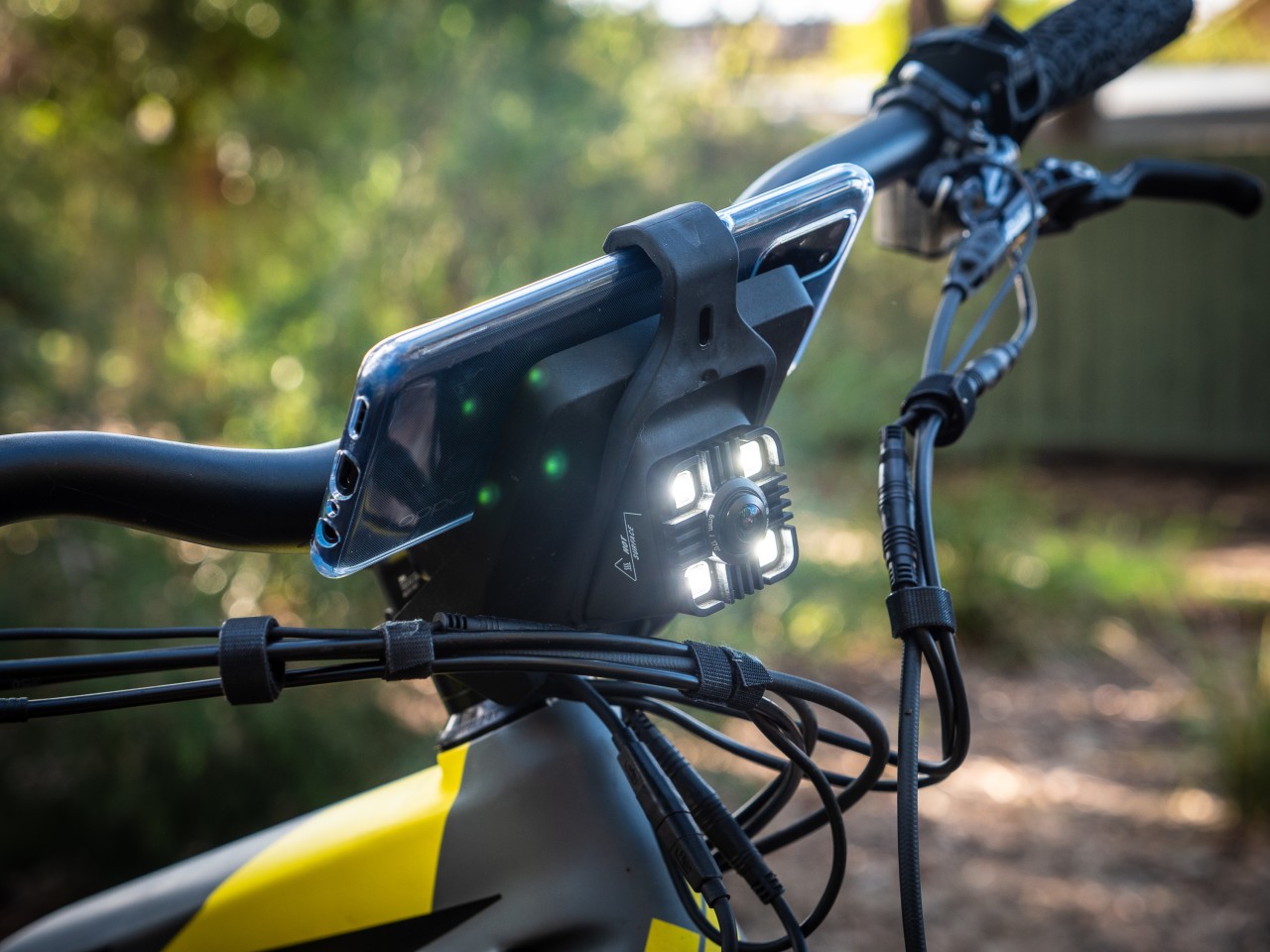
Loz Blain/New Atlas
The intelligent technology
But the real focus here is on the tech, so let’s get into that a bit. The G6 more or less has most of a smartphone built into it, with free 4G internet connectivity in more than 100 countries, gyroscopes, barometric pressure sensors, accelerometers, GPS, Wi-Fi, Bluetooth and a small processor running a custom Linux operating system.
At the headstock and under the back of the seat are a pair of lighting modules with integrated wide-angle 1080p/30fps video cameras. These operate as full-time dash cams, as well as ride-recording action cams and remote snoop cameras if your bike is borrowed or stolen – at the Greyp USA launch party, the top brass shared some amusing stories of how one stolen bike was tracked down using its GPS location, and the Greyp team was able to use these cameras to shoot the thief and his home, giving the local cops a handy evidence package. They were then able to log in and watch live streamed video as the perp was arrested and the bike recovered.
A remote control mode also lets you remote-lock the bike, or send messages to its screen so you can commence your own negotiations with bike thieves before the police get involved.
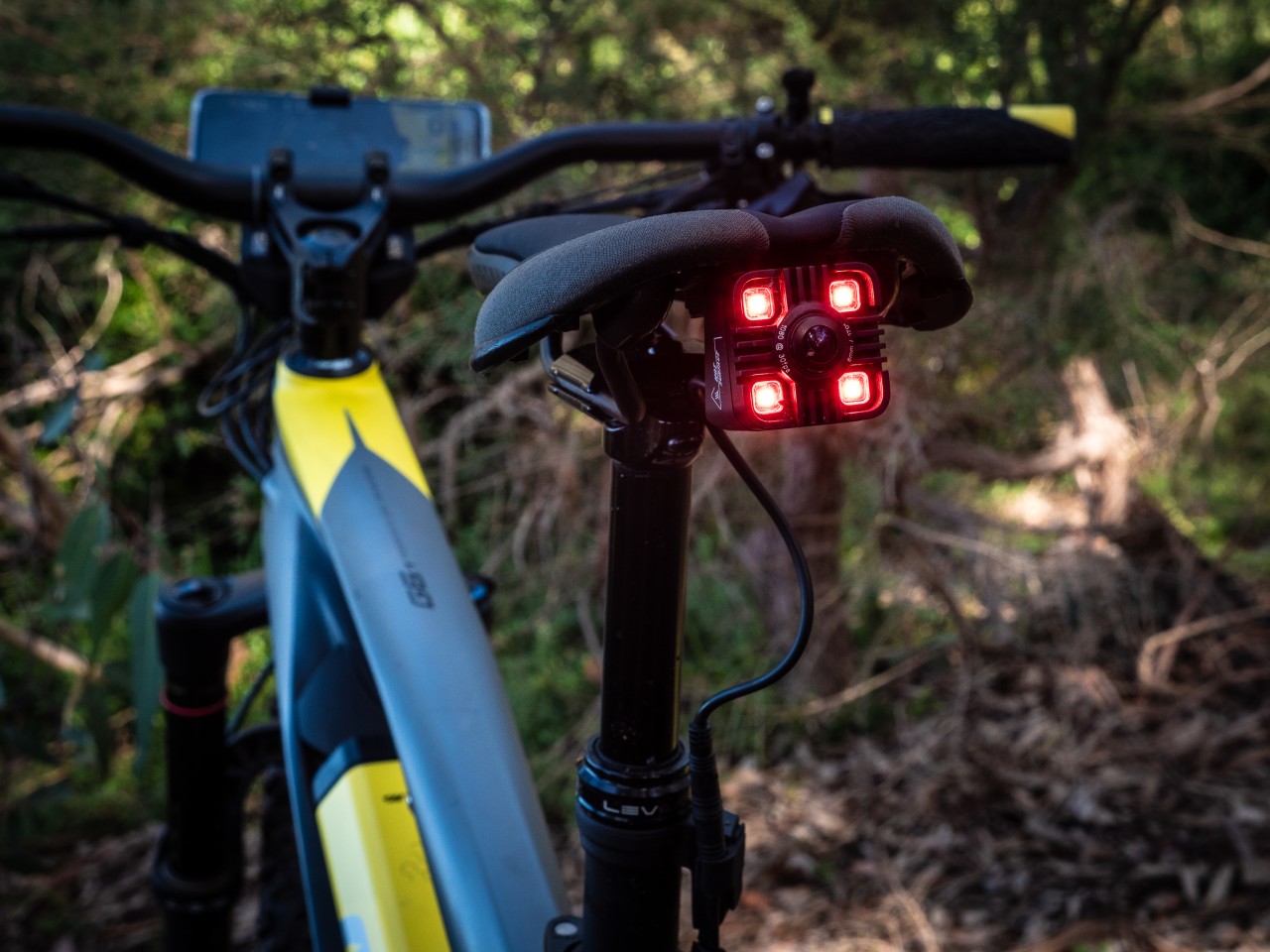
Loz Blain/New Atlas
The front camera is nicely out of the way at the headstock, but the rear camera under the seat means you can’t lift or pull the bike around from there. I never realized how much I do that. It’s a lot. The front lights are really more to be seen than to see; you’ll need to fit a better front light if you want to do any serious night riding, and that seems like a missed opportunity.
The onboard computer takes a full 35 seconds to boot up when you switch it on. That doesn’t sound like a long time, but in effect it means I’m out the gate and halfway up the street before the speedo turns on, the lights come on and the power starts to kick in. And that’s with the onboard display, which doesn’t give you access to the fun stuff. For that, you’ll have to enable a wireless hotspot on your phone, sync it up to the bike and put it in the firm rubberized cradle grip, as well as getting your Bluetooth heart rate monitoring wristband on and connected to the phone too.
Startup is thus a fiddly and drawn-out process, and I’ve started switching the thing on well before I walk out the door in preparation. Honestly, with so much of this bike’s focus dedicated to AI and interactivity, I don’t know why Greyp didn’t go the whole hog and build the smartphone right in, touchscreen and all. Sticking a phone over the main screen to access all the cool stuff feels weird.
Still, with the phone securely mounted as your new dash, you get access to the full complement of screen modes. Ride Session mode gives you a ton of data about your current ride. Fitness mode interfaces with your heart rate monitor and adjusts the assistance power to keep your heart rate in your desired cardio training zone. It’s like a built-in Fitbit with calorie counting, and it’s a very fun way to ride.
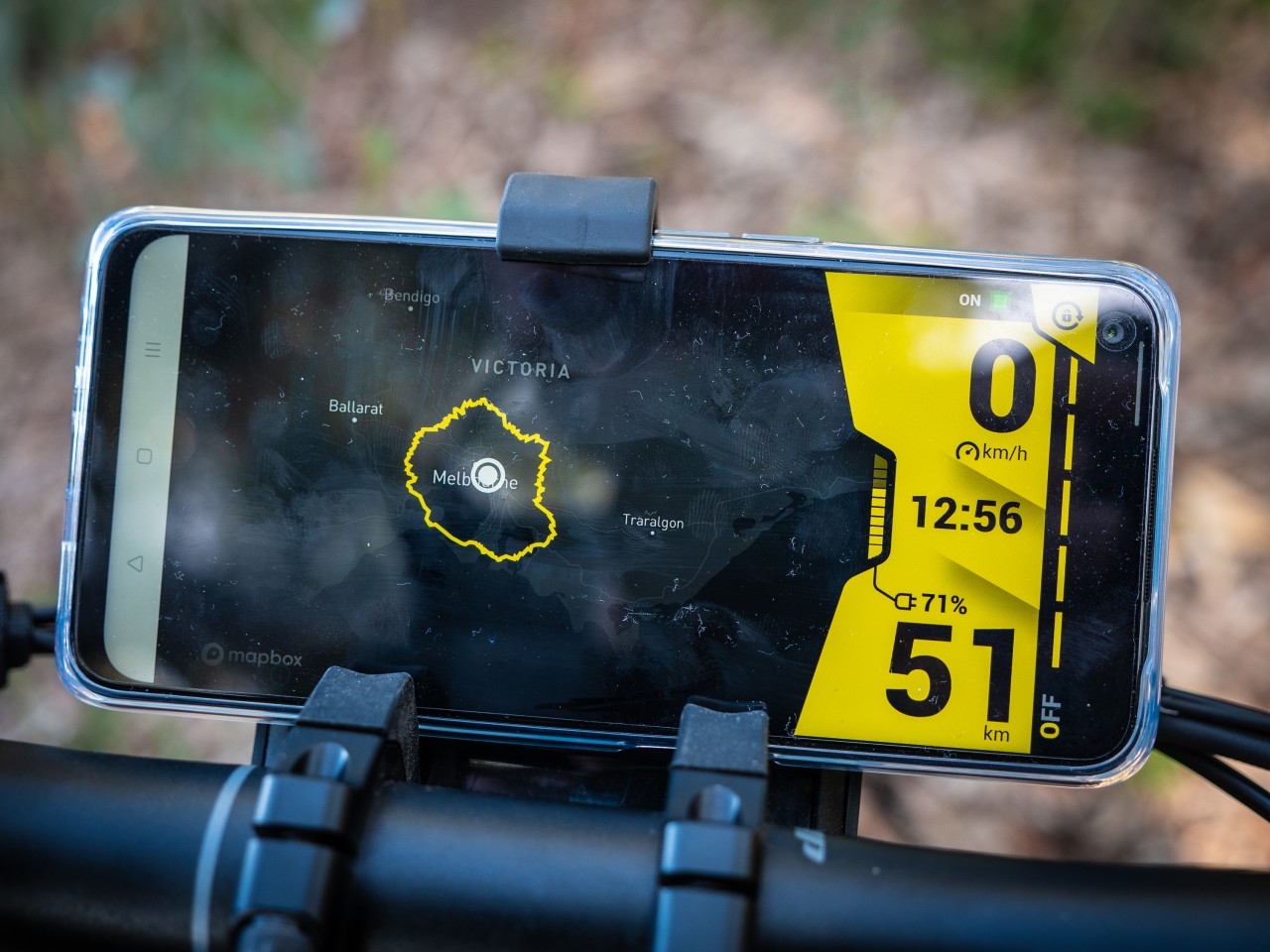
Loz Blain/New Atlas
Terrain Based Range mode shows you the famous “potato,” a shape overlaid on your area map to show how far you can ride. Spoiler: it’s a long way, around 60 miles (100 km) with that big 700-Wh battery fully charged. Why is the potato so misshapen and jagged? Because Greyp uses NASA-supplied topography data to take account of hills in its range calculations. An excellent way to give riders full confidence in the machine.
Camera mode lets you record from the front or rear cameras, or simply use your dash as a live rear-view camera. Video recordings are stored on your phone. Neither the front nor rear cameras approaches the quality of a late model GoPro – the lenses are fisheye-wide, the dynamic range is ordinary, there’s chromatic aberration, chunky video compression and the corners of the camera vision are cut off by the camera housing. The thick bundles of wiring and brake hoses at the front of the bike jiggle around the edges of the picture, and the video codec needs to be put into VLC before I can play it on my Mac.
The sample footage below is long and not that interesting apart from a slightly embarrassed-looking pooping dog around the 1:40 mark; I would’ve edited it down substantially but Final Cut wouldn’t work with it, and my slightly more exciting other clips were all a lot longer.
That doesn’t mean it’s terrible; you can really think of this as dashcam-grade vision, but the way it’s integrated into the bike is terrific. You’ve got a simple thumb switch to start and stop recording, and the bike’s AI system apparently shoots looping video at all times, and quietly saves videos if it determines you’ve done something sick, mondo, far out, rad or totally tubular enough to document. Sadly none of my riding appears to have qualified for this honor. I demand a recount.
Navigation mode does exactly what you’d expect, accepting voice commands and giving you turn-by turn directions and a nice map to look at. If you’ve got earphones in, you can probably hear the audio prompts, too, but they’re too quiet to hear at speed coming out of the phone speaker. It doesn’t matter, it still works well.
All your rides are logged in excruciating detail, so you can see your progress on common routes or play the data back for your own information. Mind you, and I don’t know whether this uses the bike’s GPS or the phone’s, this image shows you how accurate your ride map tends to look. This data doesn’t integrate with other platforms like Strava; it wants to be your Strava instead. Thus, there are apparently social functions that let you train yourself alongside other Greyp riders and compare results. Being antisocial and having no other Greyp-riding friends, I couldn’t test this stuff.
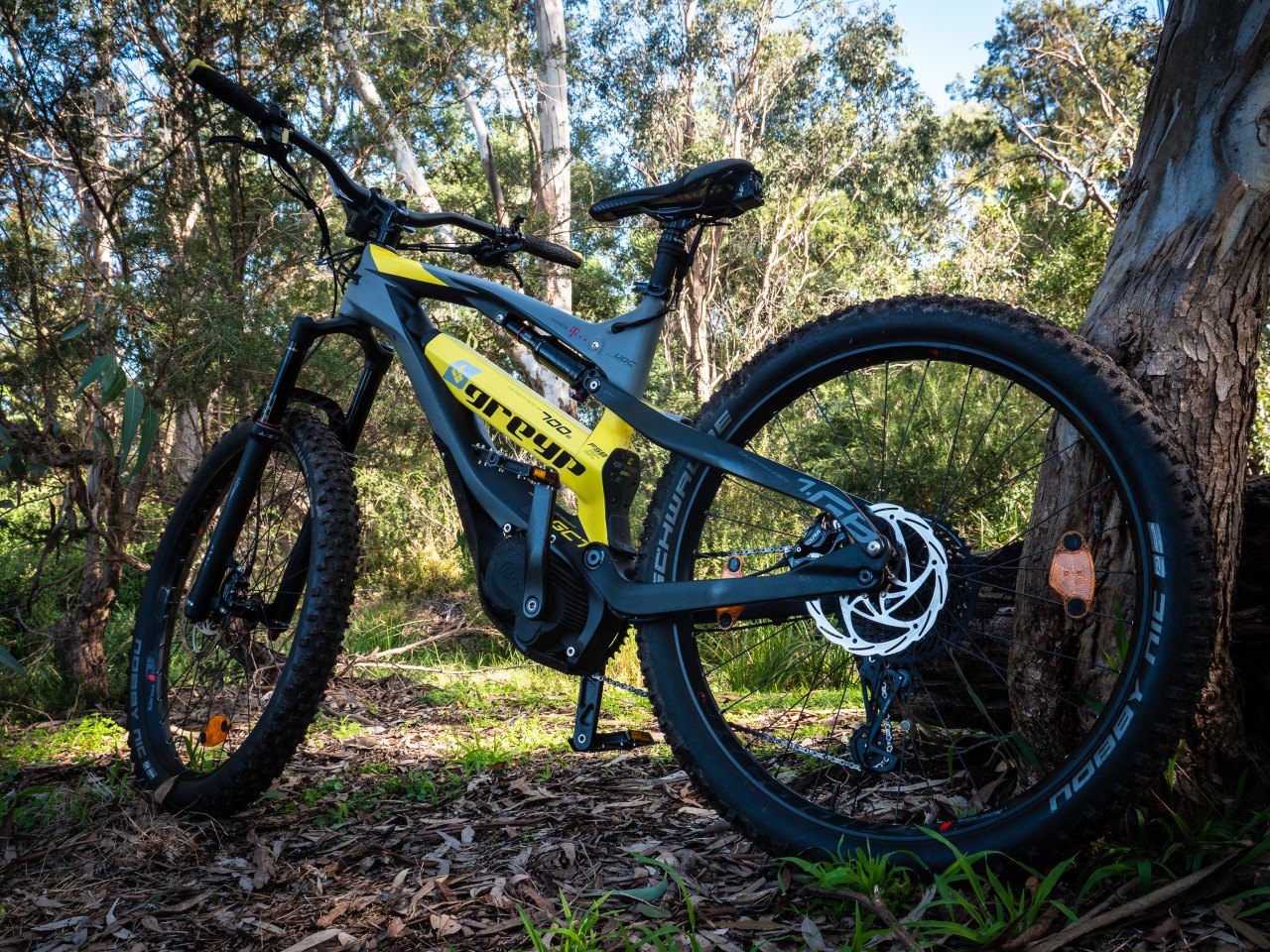
Loz Blain/New Atlas
Conclusions
The Greyp 6.1 is an arresting machine with extraordinary looks. As an off-road ebike, it’s far and away the best of the short list I’ve ridden, with lots of range, lots of torque, and a rock-solid, lightweight, nimble and capable chassis that begs you to find challenges for it.
The intelligent technology side of the bike will strike some people as super handy, others as nice-to-have, and others again as unnecessary bloat. I think I’d fall in the middle category; it’s an impressive glimpse into what’s becoming possible with smart integrated technology, and I’d find a lot of it handy when riding in unexplored territory. Throw the bike in the back of the car day-trip stuff.
But in daily riding on familiar roads, personally I find the experience is 90 percent as much fun when I leave the phone and the wristband at home and just use the integrated dash. I’d like to see Greyp remove the smartphone from the equation and build all the functionality into a touchscreen module on the bike, relegating the phone app to remote control functions, video playback and going through your stats when you’re off the bike. I suspect that’s where this kind of tech will get to eventually, and if the technology is to be the heart of this brand, I feel like you shouldn’t need to strap a phone onto it to use it.
But as of right now, the Greyp 6.1 is the most advanced and forward-thinking ebike we’ve seen, and if you’re comfortable with a price tag of US$7,999 for this model (things go North from here as suspension and componentry gets fancier and you move into the 460-watt, unlimited speed motors), you can be sure you’re packing the latest and greatest smart ebike functionality, with over-the-air automatic software updates bringing you new features as soon as Greyp’s got them finished and tested.
It’s impressive stuff and a hell of a ride. Check out a short promo video below.
Source: Greyp USA
Source of Article